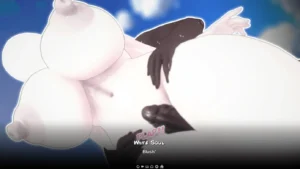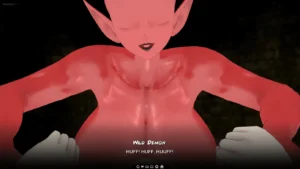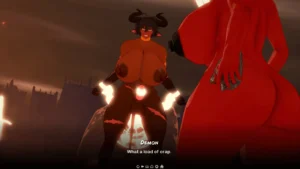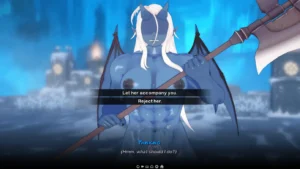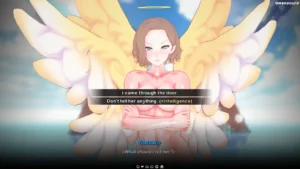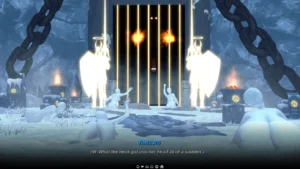
Twisted World
Play Twisted World
Twisted World review
A Deep Dive into the Complex Themes of ‘Twisted World’
In the realm of interactive storytelling, ‘Twisted World’ stands out for its complex themes and immersive gameplay. This article delves into the game’s narrative, mechanics, and the moral dilemmas it presents, providing insights into what makes ‘Twisted World’ a compelling experience for players. With its unique blend of storytelling and interactive elements, ‘Twisted World’ challenges players to navigate a world filled with moral ambiguity and difficult choices.
Understanding the Narrative of ‘Twisted World’
The Setting and Premise
Picture this: you wake up in a city where the sky is permanently stained with industrial amber, where the very air feels heavy with regret. This is the world you step into with Twisted World, a place that feels uncomfortably close to our own, yet distorted by subtle, haunting changes. 🏙️ The premise hits you immediately—this isn’t just a backdrop; it’s a character in its own right, a silent judge observing your every move.
The Twisted World narrative is built on a foundation of decay and quiet desperation. You’re not a chosen hero destined to save the universe. You’re just someone trying to survive, to find a flicker of light in the overwhelming gloom. I remember my first hour playing, just walking the rain-slicked streets, and feeling a genuine sense of unease. It wasn’t from monsters jumping out—it was from the profound silence of a world that had given up. This setting is the first and most powerful tool the game uses to pull you into its interactive storytelling. You don’t just watch the story; you inhabit its melancholy soul.
Character Development and Moral Dilemmas
This is where Twisted World truly separates itself from the pack. The character development isn’t about gaining new powers or cooler armor. It’s an internal, often painful, evolution shaped directly by the moral dilemmas in games that the title is famous for. Your avatar begins as a blank slate, and their personality, their very ethical compass, is forged by your decisions.
I’ll never forget one playthrough where I had to decide the fate of a small, desperate community hoarding medicine. 🧟♂️ Taking it would save a companion I’d grown attached to over many hours. Leaving it would allow the community—a group of strangers—to possibly survive a plague. The game didn’t flash “GOOD” or “EVIL” on the screen. It just let me sit there, in the silence, with the weight of that choice. This is the core of the Twisted World narrative—it presents problems with no clean solutions, forcing a deep level of character development as you decide what, and who, you’re willing to sacrifice.
These moral dilemmas in games are not isolated incidents. They are a relentless tide, each one subtly changing how other characters perceive you, how you perceive yourself, and even opening or closing entire story branches. Your relationships are fluid, built on a history of these difficult decisions.
Pro Tip: Don’t reload a save the moment you make a “bad” choice. Some of the most powerful character development comes from living with the unintended consequences of your actions. It makes the story uniquely yours. 🤔
Impact of Player Choices
If the dilemmas are the questions, then the player choice impact is the staggering, far-reaching answer. This isn’t an illusion of choice; it’s a complex web of cause and effect that genuinely shapes your journey. The interactive storytelling in Twisted World means your playthrough will be noticeably different from anyone else’s.
Let me give you a concrete example from my own experience. Early on, you meet a character named Eli, a scavenger who offers you a seemingly simple trade. You can:
- Agree to his terms and get a crucial item.
- Threaten him to get the item for free.
- Walk away and find another solution.
This seems minor, right? 🤷♂️ Wrong. I chose to threaten him. Twenty hours later, when my back was against the wall and I needed an ally in a fortified district, guess who was the leader of the local faction and remembered my aggression perfectly? Eli. He refused to help, and a character I cared about died as a result. That single, early moment had a massive player choice impact that echoed through the entire game.
The game’s interactive storytelling framework is built to make you feel this weight. Your choices influence:
- Narrative Endings: There are multiple core endings, determined by a mosaic of your major decisions.
- Character Arcs: Key characters can live, die, become allies, or become bitter enemies based on your actions.
- World State: The fate of entire districts and communities rests in your hands.
To illustrate the ripple effect, here’s a simplified look at how one early decision can branch out:
| Your Early-Game Choice | Immediate Consequence | Long-Term Narrative Impact |
|---|---|---|
| Spare a surrendering enemy | Gain a small amount of goodwill | That enemy may provide critical assistance in a late-game mission, offering a peaceful solution. |
| Execute the same enemy | Loot a powerful weapon immediately | Their faction becomes permanently hostile, locking you out of diplomatic options and changing the end-game landscape. |
This level of player choice impact is what makes Twisted World so replayable. You’re not just choosing dialogue options; you are an architect, building a unique version of this broken world with every decision you make. The Twisted World narrative is, ultimately, a reflection of you. It’s a masterpiece of interactive storytelling that dares to ask: who will you become when the world falls apart? 🎭
In conclusion, ‘Twisted World’ offers a unique gaming experience that combines complex narratives with engaging gameplay mechanics. By exploring its themes and mechanics, players can gain a deeper understanding of how interactive storytelling can challenge and engage audiences. Whether you’re interested in narrative depth or strategic gameplay, ‘Twisted World’ has something to offer.


